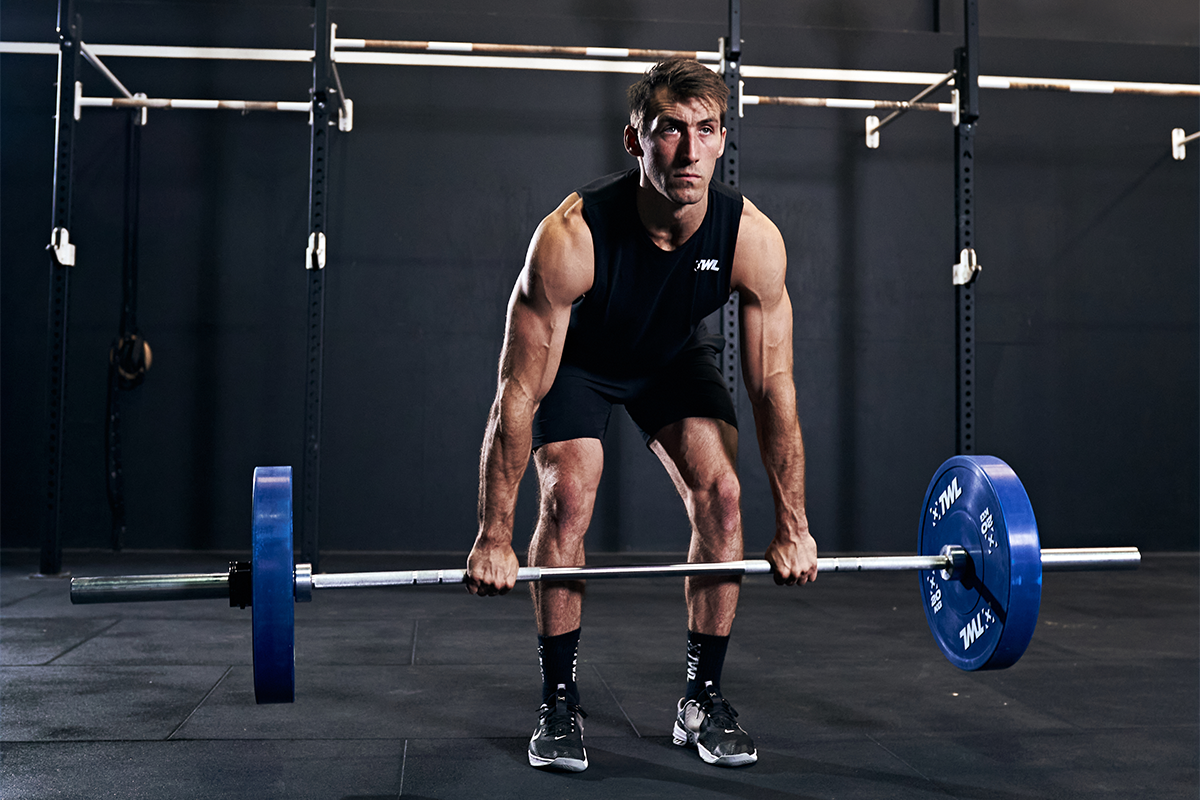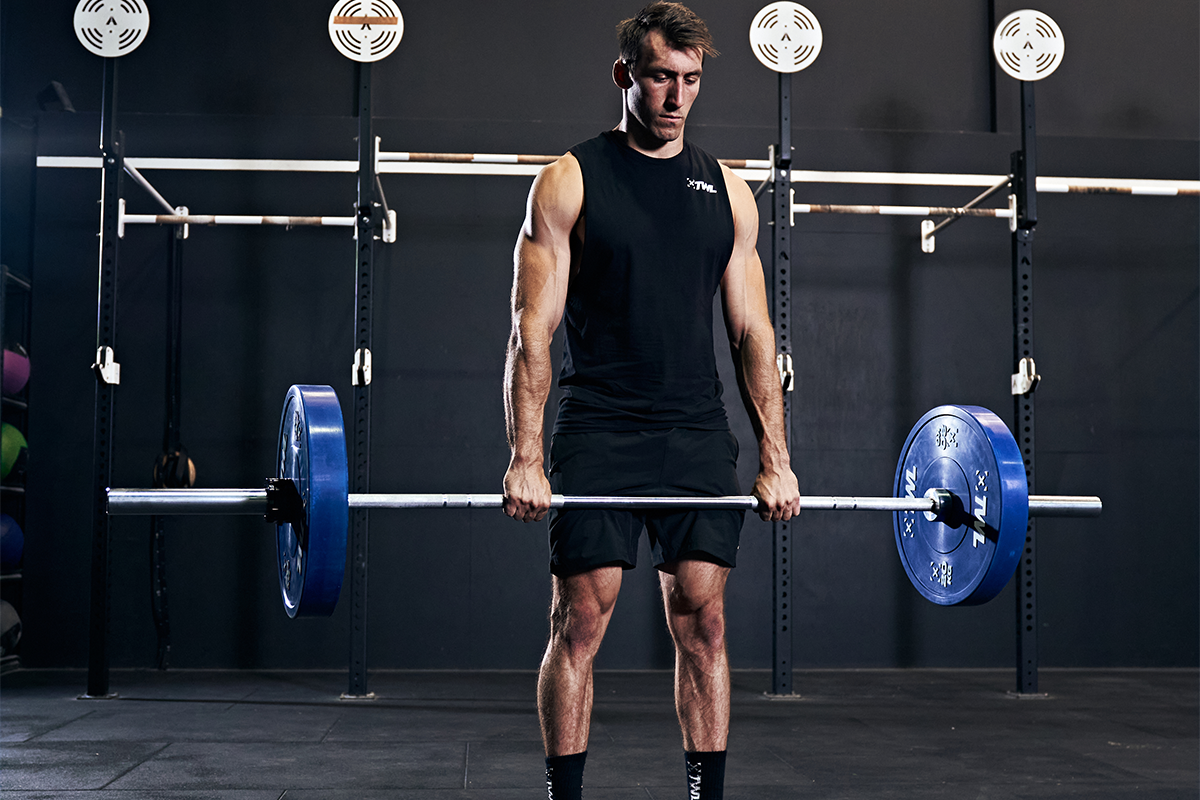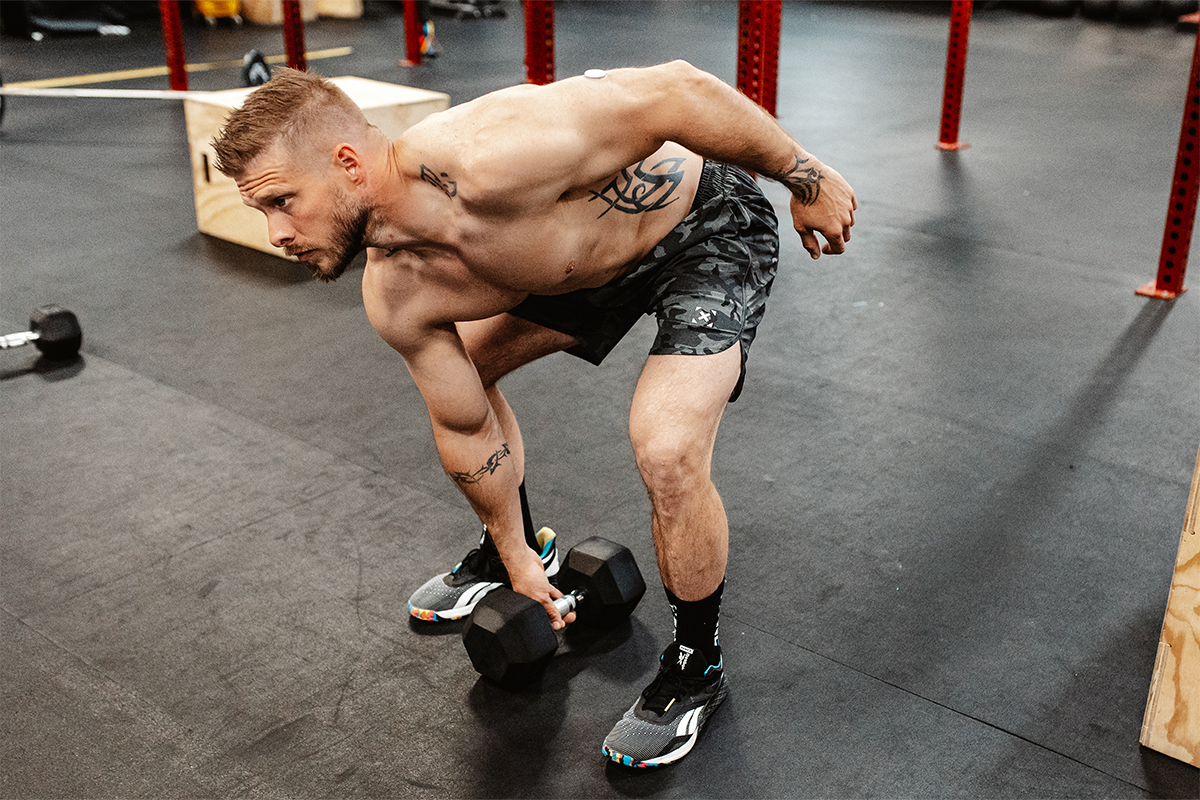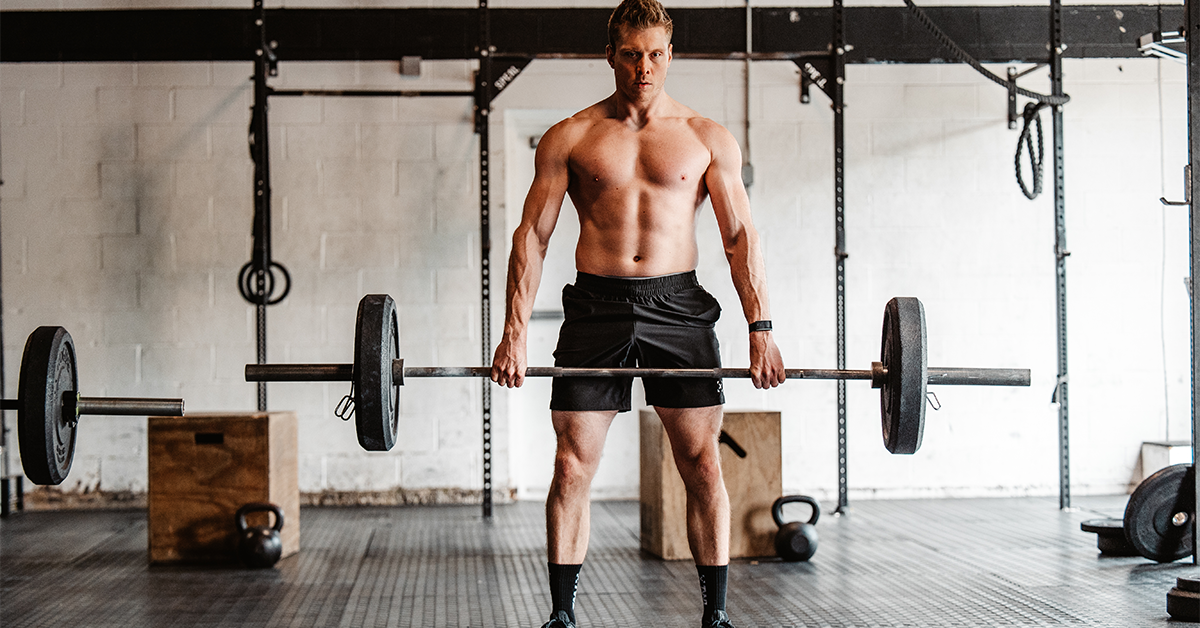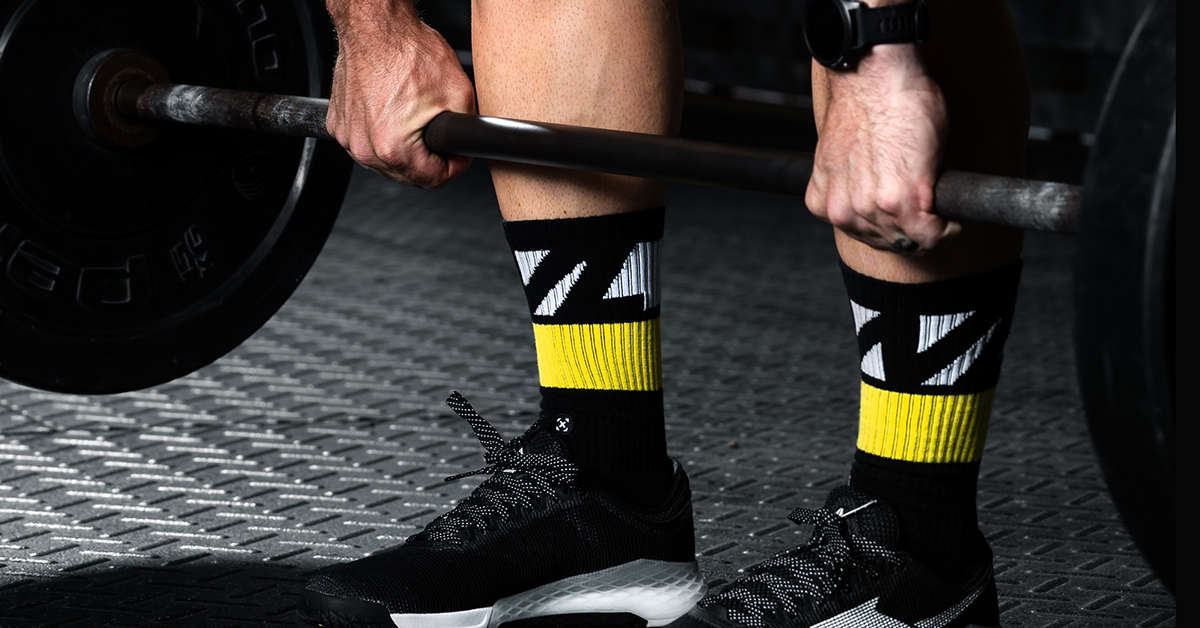At first glance, the Romanian deadlift (RDL) and standard deadlift appear to have a lot of similarities — and they do! However, the execution for each movement differs, as do some of the muscles targeted and worked. Let’s talk about the RDL vs deadlift: how they’re alike, how they’re different, and when to use each.
What is the Romanian Deadlift (RDL)?
The RDL has the athlete start in a fully extended position. In other words, you’re standing up straight with the barbell in your hands. From there, you hinge at the hips to lower the barbell to just below your knees (shin-height). This is what it looks like:
What is a Traditional Deadlift?
Your standard deadlift has you picking the barbell up from the ground, reaching full extension (meaning you’re standing up straight), and then setting the barbell back down again.
RDL vs Deadlift: How are They Alike and Different?
Indeed, the RDL and deadlift have some things in common. Both are compound movements that require you to hinge at the hips while holding the weight in front of you. To some degree, they challenge similar muscles, like your back, glutes, and hamstrings. Plus, they’ll both improve your grip strength. However, the two exercises shouldn’t be considered one and the same. Let’s talk about the differences.
Muscles Targeted
The traditional deadlift is excellent for building strength in your posterior chain. This refers to the muscles along the back of your body, including your:
- Quads.
- Glutes.
- Hamstrings.
- Spinal erectors.
- Lats.
There’s an added focus on the lower back, and you’ll feel it in your quads, too. In fact, one study found that deadlifts beat RDLs when it comes to building quad strength.
Shop Now
While the RDL will give you a burn in many of the same muscles, it’s particularly powerful in targeting in activating the:
- Glutes.
- Hamstrings.
This is for a couple of reasons. For starters, the barbell doesn’t travel as far for the RDL vs deadlift. With an RDL, it goes from your hips to below your knees. With a deadlift, it goes from your hips to the floor, so it has a greater range of motion.
Second, and kind of as a byproduct of our first point, consider that with a deadlift, the barbell comes to a completely dead stop at the floor, where you have a brief second to rest. With the RDL, however, you have no choice but to constantly remain under tension.
The Benefits of the RDL vs Deadlift
We want to be very clear: When it comes to the RDL vs deadlift, one isn’t better than the other. Instead, you should consider what your goals are when trying to decide which movement to tackle. (Better yet, make time for both movements.)
The RDL is great for:
- Building strength and muscle mass in the glutes and hamstrings.
- Increasing the explosiveness and power output of the hips (which translates to the Olympic lifts).
- Reducing the stress placed on your lower back and knees.
Now is a good time to remind you that deadlifts aren’t dangerous. Performing them with poor technique or while you’re injured, however, is.
The deadlift, meanwhile, is good for:
- Building strength through the posterior chain.
- Strengthening the lower back specifically, which is smart for preventing injury.
- More carryover to other lifts, like snatches and cleans.
- Truly functional fitness that applies to everyday life.
Note that you can deadlift a lot more than you can lift with an RDL. For this reason, too, deadlifts are much better for building grip strength.
To recap, the main differences between an RDL vs deadlift are:
- The RDL starts from a standing position, whereas the deadlift requires you to pick the barbell off the ground first.
- The RDL targets the glutes and hamstrings much more specifically, while the deadlift challenges the posterior chain as a whole.
- You can lift a lot more weight with the deadlift compared to the RDL.
So, Which One Should You Use?
As we said earlier, this largely depends on your goals and what sport you’re training in. If you’re a functional fitness athlete, powerlifter, or Olympic weightlifter, then you’re definitely going to want to make time for the standard deadlift. This is a pillar in powerlifting and also something that often appears in functional fitness competitions. And for Olympic weightlifters, both the snatch and clean begin with a deadlift. For other athletes, like bodybuilders, there’s more room to focus on RDLs instead.
In terms of RDLs, any and all athletes will benefit from this. While you can’t move loads that are nearly as heavy, it’s still a strong contender for building up those glutes and hammies, both of which play an active role in your deadlift. In fact, a common way to approach this is to prioritize the deadlift and use RDLs as an accessory exercise! Or, you could warm up with RDLs before moving to deadlifts.
Is an RDL the Same Thing as a Stiff Leg Deadlift?
No! They’re not the same. A stiff leg deadlift, like a regular deadlift, starts on the floor. And, similarly, the barbell makes contact with the floor for each rep. Once again, both offer benefits and complement each other (and traditional deadlifts) very nicely.
Deadlifts are a staple in most sports. Considering how common back injuries are — and that they usually stem from weakness and a lack of mobility — you’d be wise to make time for deadlifts. However, RDLs offer a more targeted approach to building strength, which makes them the perfect add-on to your regular programming.

